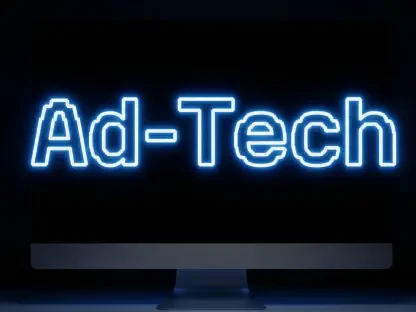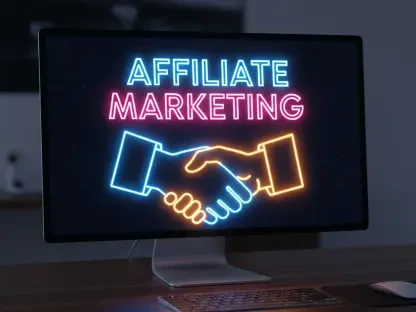Picture a digital advertising landscape where AI crafts ad copy in seconds, yet every word aligns flawlessly with a brand’s unique voice. This isn’t a distant dream but a reality unfolding right now with Google Ads’ latest innovation. Introduced at the Think Retail event just five weeks ago, the Text Guidelines feature is poised to transform how advertisers harness AI, blending speed with precision. This tool promises to tackle one of the biggest challenges in automated advertising: maintaining brand integrity while scaling efficiency.
Why New Text Guidelines Are Changing the Game for Advertisers
The digital marketing sphere is buzzing with excitement over Google Ads’ newest update. Text Guidelines offer a groundbreaking approach to AI-generated ad copy, empowering advertisers to set specific rules for tone and messaging at the campaign level. This means that businesses, whether small startups or global enterprises, can now ensure that automated content reflects their identity without constant manual oversight.
This feature arrives at a critical juncture when reliance on AI for ad creation is skyrocketing. With the potential to redefine workflows, it addresses the delicate balance between automation’s speed and the need for tailored communication. Advertisers can now focus on strategy, confident that their brand’s voice remains consistent across every ad impression.
The significance of this update cannot be overstated. It’s not just a tool but a shift in how campaigns are managed, promising to save time while reducing the risk of off-brand messaging. Early feedback from industry events suggests that this could become a cornerstone for future AI-driven advertising innovations.
Addressing the Demand for Control in AI Advertising
As AI becomes central to digital advertising, the pitfalls of inconsistent or non-compliant content have grown more apparent. Many brands have struggled with automated tools producing messages that clash with their values or fail to meet regulatory standards. This update from Google Ads emerges as a direct response to such challenges, offering a way to rein in AI outputs without sacrificing efficiency.
The broader industry trend leans toward transparency and customization, with marketers seeking greater influence over automated processes. Text Guidelines provide a framework to set boundaries, ensuring that AI respects predefined standards. This is especially vital for sectors like finance or healthcare, where precision in language can make or break trust with audiences.
By embedding control mechanisms into the platform, Google addresses a pressing need for accountability. This feature isn’t just about preventing errors; it’s about empowering advertisers to shape AI content proactively. The result is a system that aligns with both creative goals and legal necessities, paving the way for safer automation.
Breaking Down the Text Guidelines Feature
At its core, the Text Guidelines tool offers campaign-level customization that guides AI in generating ad copy. Advertisers can define parameters for tone, language style, and compliance requirements, ensuring that outputs match brand expectations. For instance, a luxury brand can restrict overly casual phrasing, while a legal firm can mandate specific disclaimers in every ad.
The mechanics are straightforward yet powerful. Once activated within a campaign, the feature applies rules to all AI-generated text assets, filtering out content that doesn’t comply. According to PPC Specialist Arpan Banerjee, who first noted its rollout in select accounts, early data points to a gradual expansion, with promising results in maintaining message consistency.
Practical applications highlight its value. A retailer could use it to emphasize promotional language during holiday sales, while a nonprofit might enforce empathetic tones in outreach campaigns. This level of control ensures that automation enhances rather than undermines strategic objectives, marking a significant leap forward in ad tech.
Industry Voices on Automation and Brand Safety
Digital marketing experts have hailed this update as a crucial step in balancing AI’s potential with brand protection. At the Think Retail event, a consensus emerged that tools like Text Guidelines are essential for maintaining trust in automated content. One attendee, a senior strategist, noted that the feature “bridges the gap between innovation and reliability,” a sentiment echoed across panels.
Early adopters have shared compelling insights. A mid-sized e-commerce brand reported a 30% reduction in manual copy edits after implementing the guidelines, allowing their team to focus on analytics over revisions. Such anecdotes underscore how this tool is already reshaping campaign management for the better.
The broader implication is clear: as AI-generated content grows ubiquitous, safeguards become non-negotiable. Industry leaders view this as a foundational move by Google to address risks while amplifying automation’s benefits. Their feedback paints a picture of an advertising future where control and creativity coexist seamlessly.
Maximizing Text Guidelines in Google Ads Campaigns
For advertisers eager to integrate this feature, the process is both accessible and impactful. Start by navigating to the campaign settings in Google Ads, where Text Guidelines can be enabled and customized. Define specific rules—whether it’s a formal tone for corporate messaging or vibrant language for consumer promotions—and apply them across text assets.
Monitoring is just as critical as setup. Regularly review AI-generated outputs to ensure alignment with the established parameters, adjusting rules as campaigns evolve. For example, a seasonal shift in messaging might require tweaking tone guidelines to reflect urgency or festivity, keeping ads relevant to the audience.
This tool suits businesses of all sizes. Small enterprises can streamline limited resources by automating compliant content, while larger firms can maintain uniformity across global markets. By embedding these guidelines, advertisers can achieve a rare blend of speed and precision, ensuring every ad resonates with its intended demographic.
Reflecting on a Milestone in Digital Advertising
Looking back, the rollout of Text Guidelines stood as a defining moment for Google Ads, addressing the intricate dance between AI efficiency and brand fidelity. It provided a mechanism that allowed advertisers to harness automation without fear of losing their unique voice. This innovation marked a turning point, setting a precedent for how platforms could empower users in an AI-driven era.
The impact lingered as a reminder of the industry’s direction toward greater control within automated systems. For marketers, the next steps involved diving deeper into customization, experimenting with rules to refine campaign outcomes. Exploring how these guidelines adapted to diverse industries promised to unlock even more potential.
Beyond immediate application, this development hinted at future advancements where AI and human oversight would blend even more seamlessly. Advertisers were encouraged to stay engaged with platform updates, leveraging tools like these to stay ahead in a competitive landscape. The journey of balancing technology with strategy had just taken a significant stride forward.









